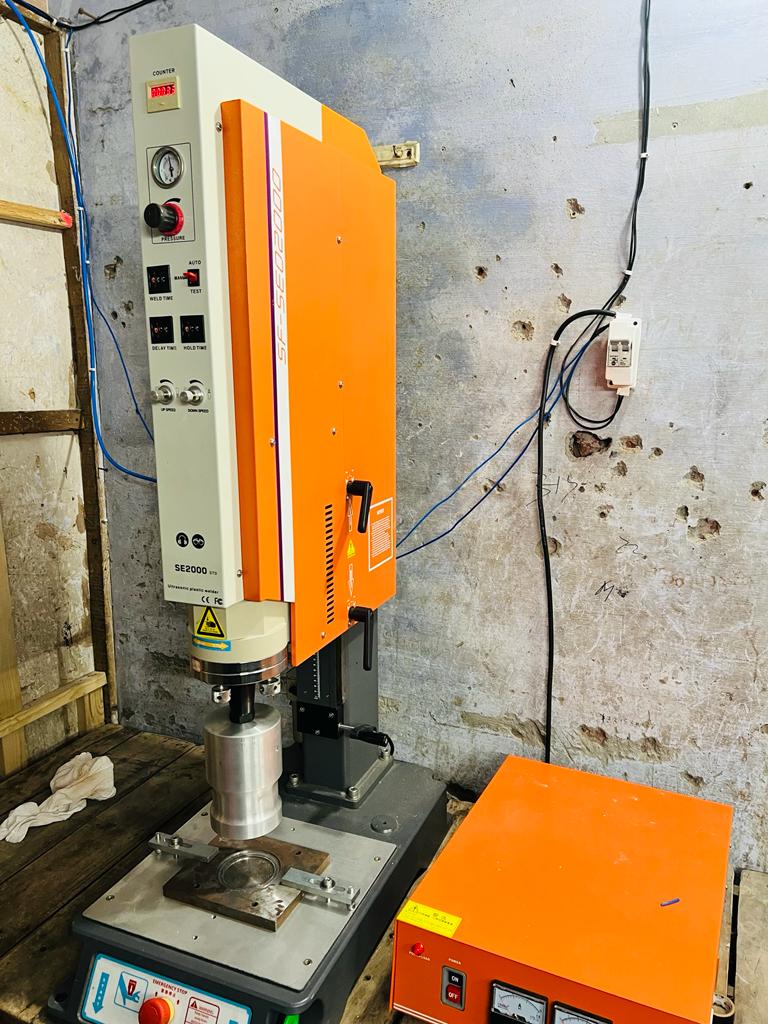In the realm of industrial plastic joining, precision, efficiency, and reliability are of utmost importance. One notable solution in this field is the Ultrasonic Plastic Welding Machine, particularly well-regarded for its effectiveness in shower welding applications. Among the various options available, Dhruv’s Ultrasonics stands out as a leading choice, renowned for its exceptional quality and performance. In this article, we will explore the principles behind ultrasonic technology, discuss the advantages of choosing Dhruv’s Ultrasonics, and assess the pros and cons of ultrasonic plastic welding.


Understanding Ultrasonic Welding
Ultrasonic welding harnesses high-frequency ultrasonic vibrations to generate heat through friction between the materials being fused. The process typically involves the following steps:
- Preparation: Prior to welding, the surfaces of the materials undergo thorough cleaning and preparation to ensure optimal adhesion.
- Clamping: The materials are firmly secured together within the fixture of the ultrasonic welding machine, ensuring precise alignment.
- Application of Ultrasonic Vibrations: An ultrasonic transducer converts electrical energy into mechanical vibrations, typically exceeding 20,000 Hz. These vibrations are then transmitted to the materials via a sonotrode (also known as a horn), creating localized heat at the interface.
- Melting and Bonding: The application of ultrasonic energy causes the materials to soften and melt at the contact point. Once the desired level of melting is achieved, the vibrations cease, allowing the molten material to solidify and form a strong bond.
- Cooling: The welded assembly is allowed to cool within the fixture, ensuring the integrity and durability of the joint.
Why Dhruv’s Ultrasonics?
- Uncompromising Quality: Dhruv’s Ultrasonics is synonymous with high-quality products. Their welding machines are meticulously engineered and constructed to exacting standards, ensuring consistent and dependable performance.
- Customization Options: Recognizing the diverse requirements of their clientele, Dhruv’s Ultrasonics offers customization options to tailor their machines to specific needs. Whether it’s adjusting frequencies or creating specialized fixtures, customers benefit from enhanced flexibility to optimize their welding processes.
- Reliable Support: In addition to delivering top-tier equipment, Dhruv’s Ultrasonics is dedicated to providing unparalleled customer support. Their team of experts is readily available to offer technical assistance, maintenance services, or troubleshooting, ensuring a seamless experience for their clients.
- Innovation: Dhruv’s Ultrasonics remains at the forefront of technological advancements in ultrasonic welding. Through ongoing research and development efforts, their machines incorporate the latest innovations, resulting in increased efficiency and effectiveness.
- Cost-Effectiveness: Despite offering cutting-edge technology, Dhruv’s Ultrasonics maintains competitive pricing, making their solutions accessible to a wide range of businesses.
Pros and Cons of Ultrasonic Plastic Welding
Pros:
- Speed and Efficiency: Ultrasonic welding facilitates rapid assembly, making it ideal for high-volume production environments.
- Non-Contact Process: Unlike traditional welding methods, ultrasonic welding eliminates the need for adhesives, solvents, or additional fasteners, minimizing material waste and production costs.
- Consistent Results: The automated nature of ultrasonic welding ensures uniformity and precision in the welding process, resulting in consistently high-quality joints.
- Versatility: Ultrasonic welding can be applied across a diverse range of materials, including thermoplastics, composites, and films, offering versatility in manufacturing applications.
Cons:
- Material Limitations: While ultrasonic welding is compatible with many materials, factors such as material thickness, composition, and geometry can impact weld quality and feasibility.
- Equipment Cost: Initial investment in ultrasonic welding equipment may be higher compared to some conventional methods. However, the long-term benefits in terms of efficiency and reliability often justify this cost.
- Design Constraints: Design considerations must accommodate the requirements of ultrasonic welding, including adequate joint access and proper alignment, which may necessitate modifications.